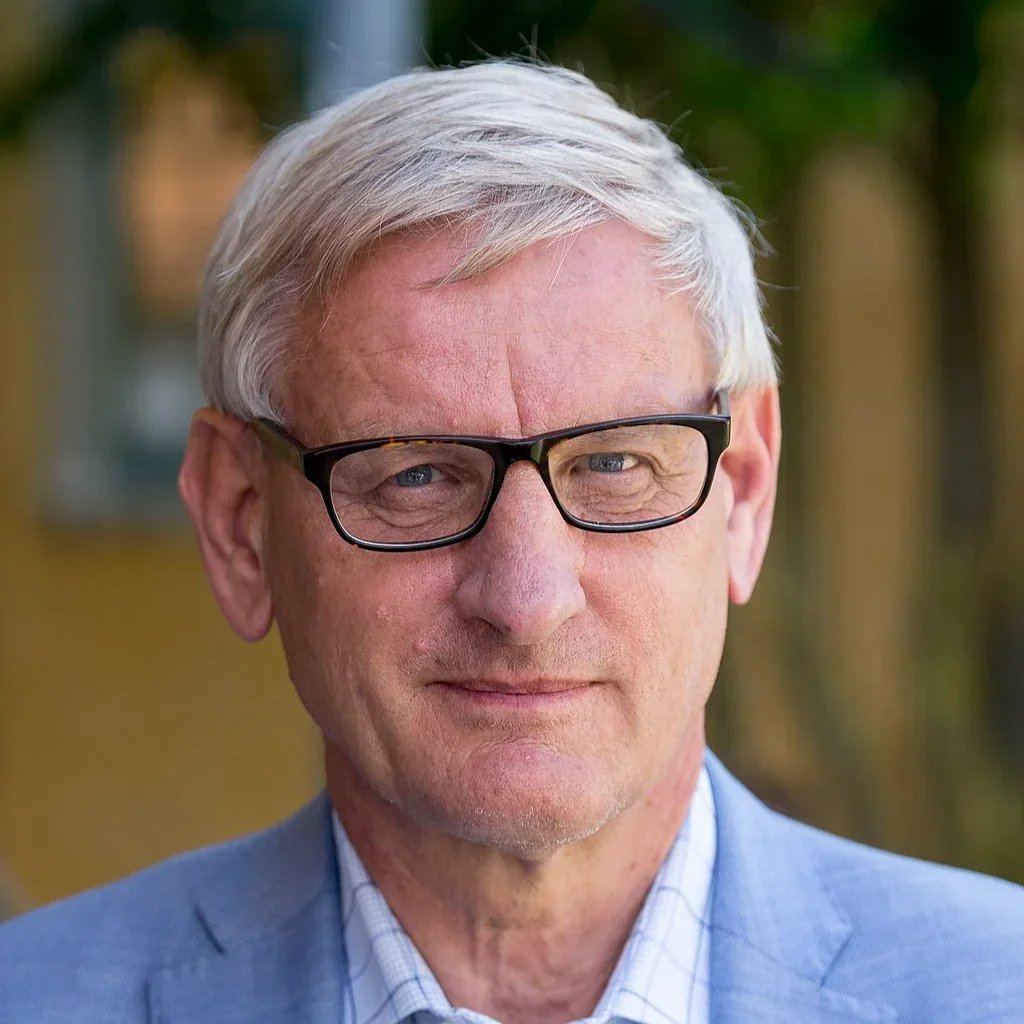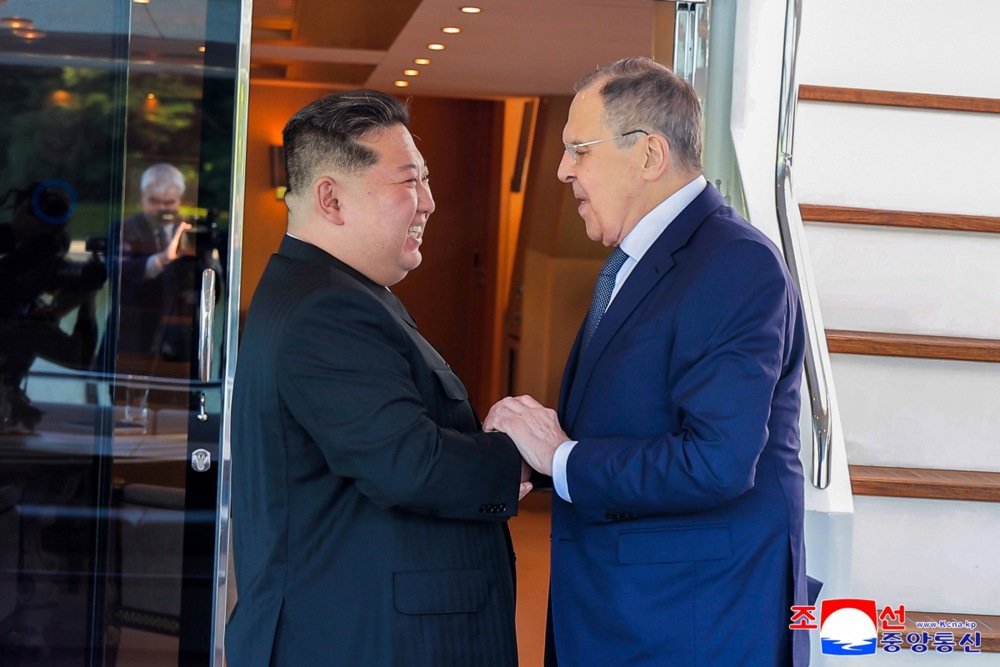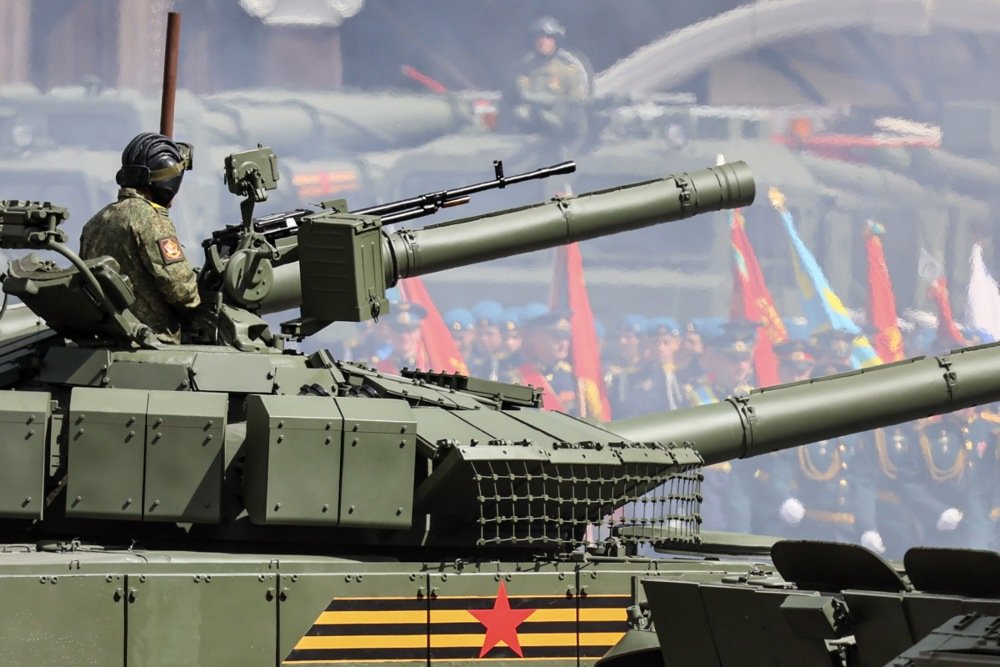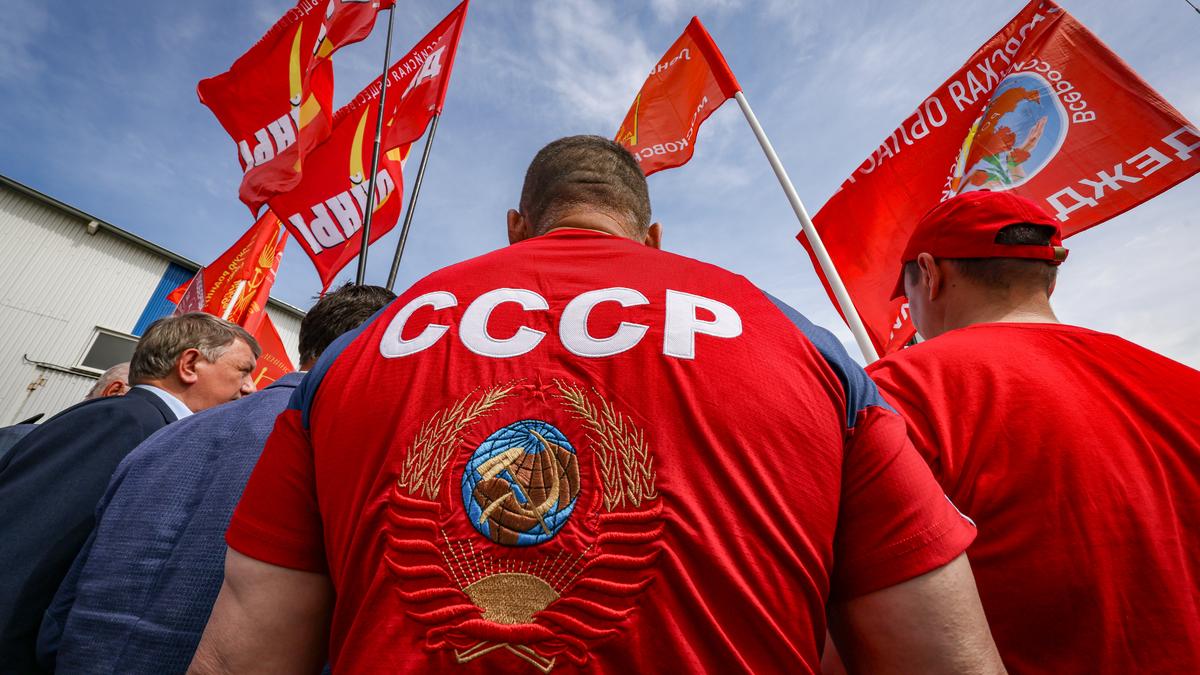Many gasped when Russian Foreign Minister Sergey Lavrov landed in Anchorage, Alaska, for the Trump-Putin summit wearing a sweater with the letters CCCP — the Cyrillic acronym for the Soviet Union. Obviously, this was no accident. But what was Lavrov hoping to convey?

Carl Bildt
Former Swedish prime minister and foreign minister
His intended message, presumably, was that today’s Russia is as great and powerful as the USSR once was; that Vladimir Putin has restored his country’s status as a superpower deserving of global respect. Nostalgia for the Cold War era — when the Soviet Union and the United States were the world’s only two superpowers — has consumed the Kremlin ever since the Soviet empire crumbled.
Lavrov himself is very much a creature of the past. Though he is fluent in the language of multilateral diplomacy (owing to a previous posting at the United Nations in New York), his penchant for bullying has distinct Soviet roots. He seems sincere in his belief that things were better when the USSR existed. His frequent trips to Pyongyang, North Korea, in recent years cannot have been enjoyable. When a summit with the US president on what was once Russian territory presented itself, he made sure to pack his old sweater.

North Korean leader Kim Jong Un greets Russian Foreign Minister Sergey Lavrov during a meeting in Wonsan, North Korea, 12 July 2025 Photo: EPA/KCNA
The message will not have been well received in countries that were once locked behind the Iron Curtain. The Russian foreign minister has confirmed the worst fears of Estonians, Latvians, and Lithuanians about Putin’s true endgame, as well as causing disquiet across the Southern Caucasus and Central Asia. These countries remember the Soviet Union not as a splendid empire, but as a prison.
In fact, it was discontent among non-Russians that finally triggered the USSR’s collapse. As political repression eased following Mikhail Gorbachev’s attempts to reform the decaying Soviet system in the 1980s, it became impossible to reconcile these nationalities’ aspirations with the Kremlin-centric system. The Soviet Union had to end for its peoples to be free.
The same was true for Russia. Boris Yeltsin raised the Russian flag, not the Soviet one, because he envisioned a future in which his country had shed the burdens of empire. He wanted a Russia ruled by Russians, and that goal could not be pursued within a complex, expensive array of imperial structures. The Soviet Union was the past, whereas Russia, Ukraine, and all the other Soviet republics pursuing independence were the future.
Over time, a more democratic, liberalising Ukraine came to be seen not as a partner, but as a danger to Russia’s decidedly illiberal, anti-democratic regime.
It was not an unreasonable vision. Following the Soviet Union’s collapse, there was an immediate agreement to respect the old borders between the former republics, to prevent new conflicts. When Russia responded with extreme brutality to Chechnya’s effort to declare independence, the rest of the world respected the Kremlin’s claim that the breakaway enclave lies within Russian borders.
After this, there was no reason why Russia and Ukraine — and all of the Soviet Union’s other formerly captive nations — could not live in harmony. Of course, there was always going to be some competition, perhaps even intense rivalry; but these dynamics could have been healthy. As good neighbors, all these countries could have become good partners — as one finds in Western Europe.
If the Kremlin continues to be motivated by imperial nostalgia, Russia will never be able to be Russia.
But it didn’t turn out that way. Imperial nostalgia started to creep back into the Kremlin. Threatened by democratic developments in multiple former Soviet states, Putin’s regime grew increasingly authoritarian. Over time, a more democratic, liberalising Ukraine came to be seen not as a partner, but as a danger to Russia’s decidedly illiberal, anti-democratic regime. Putin started to describe Ukraine as “anti-Russia,” even though the Ukrainians never represented any such position. They simply wanted Ukraine to be Ukraine.

A Russian serviceman on a T-72 battle tank takes part in Russia’s Victory Day parade in Moscow, 9 May 2025. Photo: EPA/YURI KOCHETKOV
It is no surprise that Lavrov’s sweater would be taken as a threat in any country where Soviet satellite regimes were once installed. But it should also be seen as a threat to Russia itself. If the Kremlin continues to be motivated by imperial nostalgia, Russia will never be able to be Russia. Destroying and attempting to occupy Ukraine will burden it for generations. The Kremlin’s last-gasp imperial project might be sustained if China sees Russia as a useful satellite (it does have raw materials and energy, as well as a permanent seat on the UN Security Council, but not much more). But it will have foregone a future as a relatively peaceful, prosperous modern nation-state — a goal that was well within its means to achieve.
The Soviet Union was a massive failure. It emerged in 1922 promising a bright new future for mankind, but when it collapsed seven decades later, Western countries had to fly in emergency humanitarian assistance. In the USSR’s heyday, Nikita Khrushchev boasted that it would “bury” the West; in fact, it was digging its own grave. We should all thank Lavrov for reminding us of this squalid legacy. The nostalgia he channeled in Alaska is a threat to many, including ordinary Russians.
This article was first published by Project Syndicate. Views expressed in opinion pieces do not necessarily reflect the position of Novaya Gazeta Europe.
Join us in rebuilding Novaya Gazeta Europe
The Russian government has banned independent media. We were forced to leave our country in order to keep doing our job, telling our readers about what is going on Russia, Ukraine and Europe.
We will continue fighting against warfare and dictatorship. We believe that freedom of speech is the most efficient antidote against tyranny. Support us financially to help us fight for peace and freedom.
By clicking the Support button, you agree to the processing of your personal data.
To cancel a regular donation, please write to [email protected]

